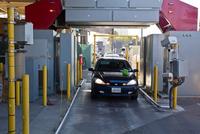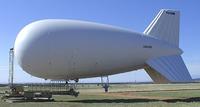-
State collapse in the hemisphere an “existential” threat to U.S.: Southern Command chief
Marine Corps Gen. John Kelly, commander of U.S. Southern Command, is asking Congress to allocate more resources to help combat the flow of illegal drugs, weapons, and people from Central America. “In comparison to other global threats, the near collapse of societies in the hemisphere with the associated drug and (undocumented immigrant) flow are frequently viewed to be of low importance,” Kelly said. “Many argue these threats are not existential and do not challenge our national security. I disagree.”
-
-
Proposed border security surge threatens to create ghost towns along the border -- again

The U.S. Customs and Border Patrolhas apprehended more illegal immigrants in the Rio Grande Valley in the first eight months of fiscal 2014 (160,000) than it did for all of fiscal 2013 (154,453). Last May, agents apprehended over 1,100 illegal immigrants per day in the Rio Grande Valley. Texas officials have now authorized the Department of Public Safety(DPS) to send additional law enforcement personnel to patrol areas along the Texas-Mexico border at a cost of $1.3 million each week for the remainder of the year. Some residents compared the proposed surge, announced last week, to 2013’s Operation Strong Safety, which, these residents say, resembled a police state which created ghost towns along the border where illegal immigrants became afraid to go to work or send their children to school for fear of deportation.
-
-
2015 DHS budget is border patrol “wish list”: critics
Last week, the House Appropriations Committee approved $39.2 billion 2015 budget for the Department of Homeland Security (DHS). Critics were quick to point out that many items in the budget were not on the original budget request, but were since added after showing up originally on a wish list of hardware that could improve and extend the surveillance capabilities of DHS.
-
-
DHS revises rules for use of deadly force on border

On 30 May DHS released new guidelines detailing when the use of force by Border Patrol officials is authorized. The lack of explicit scenarios within the rules, however, has led to questions of when such acts are truly warranted.
-
-
New detection technology to help combat nuclear trafficking
According to the International Atomic Energy Agency (IAEA), the greatest danger to nuclear security comes from terrorists acquiring sufficient quantities of plutonium or highly enriched uranium (HEU) to construct a crude nuclear explosive device. The IAEA also notes that most cases of illicit nuclear trafficking have involved gram-level quantities, which can be challenging to detect with most inspection methods. Special algorithm coupled with commercial X-ray scanners allows detection of small amounts of fissile materials in luggage.
-
-
U.S.-Mexico border security barriers affect movement of animals
Security barriers in national parks on the U.S.-Mexican border which aim to deter illegal migrants are affecting the movements of some native animal species while not necessarily restricting the movement of humans, according to new research.
-
-
CBP takes another stab at high-tech border security

The George W. Bush administration’s effort to build a high-tech border security system – the Boeing-led SBINet – was a failure, and the Obama administration shut it down in 2011. CBP is now trying again, this time with Elbit Systems as the lead contractor. The hope is that the lessons of the doomed SBINet, and Elbit’s experience in building high-tech defensive systems along Israel’s borders, would yield better result this time around.
-
-
CBP awards $145 million border towers contract to Elbit
DHS’s Customs and Border Protection(CBP) has awarded Elbit Systems of America, a subsidiary of Israeli based Elbit Systems, a $145 million contract for the Integrated Fixed Tower (IFT) project along the Mexico-Arizona border. The first phase of the project includes a number of observation towers along the Nogales, Arizona border with Mexico. Additional options could include towers at over five other border sections in Arizona.
-
-
Two politicians insisting on more congressional oversight of DHS
The lawmakers who support the proposed DHS Acquisition Accountability and Efficiency Act, authored by Representative Jeff Duncan (R-South Carolina), are doing exactly what they were sent to Washington to do: they are attempting to provide fiscal oversight over one of our largest federal agencies. Hopefully, politicians on both sides of the aisle will join Representatives Duncan and Michael McCaul (R-Texas) in passing legislation forcing DHS to use tax payer money in the most efficient ways possible, including demanding contractors meet the terms of their contracts, not rewarding contractors who have a record of poor performance, and completing their security-related projects in a timely manner.
-
-
Robots help Border Patrol navigate smugglers’ tunnels
The U.S. Border Patrol is using remote- controlled robots to navigate tunnels used by drug cartels and smugglers to import drugs, weapons, and people from Mexico into the United States.The robots are used as the first eyes on places deemed too dangerous for humans to explore.
-
-
Modernizing DHS border enforcement systems may cost more than $1.5 billion
TECS is the primary DHS system that Customs and Border Protection (CBP) personnel use to screen foreigners against a variety of watchlists, and it manages case files for Immigration and Customs Enforcement (ICE). ICE assignments tracked include money-laundering probes, online pornography investigations, and phone data analyses. A GAO audit last month found that the planned $1.5 billion upgrade to TECS now has no foreseeable end-date or final cost estimate.
-
-
Africa’s Sahel region threatened by terrorism, organized crime: Ban Ki-moon
Terrorism, trafficking in arms, drugs, and people, and other transnational forms of organized crime are threatening security in Africa’s vast sub-Saharan Sahel region, Secretary-General Ban Ki-moon warned the Security Council yesterday. He called for continued strengthening of The UN Multidimensional Integrated Stabilization Mission in Mali (MINUSMA), a 12,600-strong force set up by the Council in April and authorized “to use all necessary means” to carry out security-related stabilization tasks, protect civilians, UN staff, and cultural artefacts in the cou8ntry, and create the conditions for provision of humanitarian aid.
-
-
Government agencies recognized for engagement with industry
The Washington Homeland Security Roundtable (WHSR) established the Industry Engagement Awards to recognize exceptional efforts by government agencies to collaborate, engage, and partner with industry. Last year, WHSR recognized both the Transportation Security Administration (TSA) and the U.S. Border Patrol for their engagement and programs with industry through WHSR. At their upcoming 4 December holiday reception, WHSR will again recognize various government leaders of DHS component agencies for their contributions to partnering and engaging with industry.
-
-
Sahel-Sahara countries to build joint security training center in Rabat
At a meeting on common security challenges in north and west Africa, government officials from nineteen Sahel, Sahara, and Maghreb countries agreed to build a joint security training center in Rabat, Morocco, to increase the competency of the region’s security forces to deal with growing terrorist and jihadist threats. The nineteen countries will also increase information sharing and harmonize the legal means they use to fight security threats. The ministers said that one of the first steps toward improving security in west and north Africa would be to improve monitoring of border and increase border security.
-
-
TCOM’s aerostat systems help U.S. Border Patrol

Several TCOM aerostat systems are being evaluated by Border Patrol agents in operational environments along U.S.-Mexico border. TCOM’s aerostat systems enable operators to view activity along the border. The system can typically remain aloft for two weeks to one month at a time. With operational altitudes of up to 5,000ft, the aerostats provide monitoring of thousands of square miles.
-
- All
- Regional
- Water
- Biometrics
- Borders/Immig
- Business
- Cybersecurity
- Detection
- Disasters
- Government
- Infrastructure
- International
- Public health
- Public Safety
- Communication interoperabillity
- Emergency services
- Emergency medical services
- Fire
- First response
- IEDs
- Law Enforcement
- Law Enforcement Technology
- Military technology
- Nonlethal weapons
- Nuclear weapons
- Personal protection equipment
- Police
- Notification /alert systems
- Situational awareness
- Weapons systems
- Sci-Tech
- Sector Reports
- Surveillance
- Transportation
Advertising & Marketing: advertise@newswirepubs.com
Editorial: editor@newswirepubs.com
General: info@newswirepubs.com
2010-2011 © News Wire Publications, LLC News Wire Publications, LLC
220 Old Country Road | Suite 200 | Mineola | New York | 11501
Permissions and Policies
Editorial: editor@newswirepubs.com
General: info@newswirepubs.com
2010-2011 © News Wire Publications, LLC News Wire Publications, LLC
220 Old Country Road | Suite 200 | Mineola | New York | 11501
Permissions and Policies
